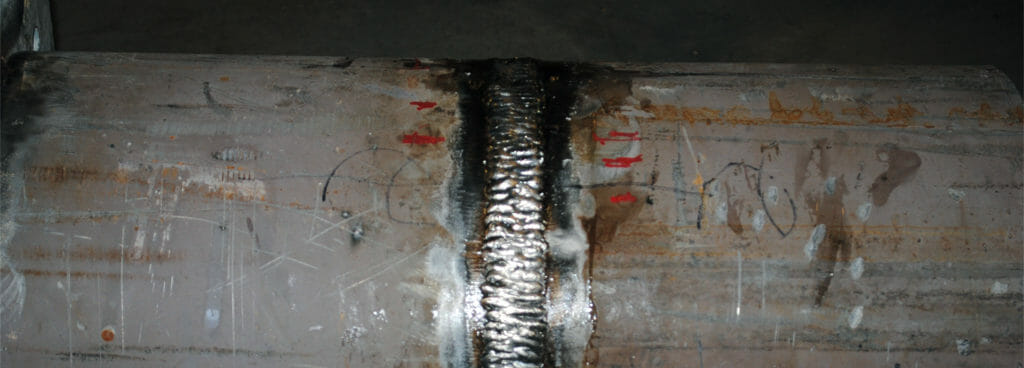The Importance of Thorough Welding Examination in Industrial Applications
In the world of commercial applications, the relevance of thorough welding assessment can not be overstated. It plays an important duty in making sure the structural integrity and durability of welded parts. Advanced non-destructive testing techniques permit the very early detection of possible issues, such as splits and incomplete fusion, which, if left uncontrolled, might bring about tragic failings. Furthermore, adherence to rigorous market criteria not only guarantees top quality however additionally builds customer confidence. As we explore the diverse benefits of persistent welding assessments, one must take into consideration the wider ramifications on safety and security, integrity, and cost-effectiveness in industrial operations.
Enhancing Architectural Integrity
When it comes to welding inspection in industrial applications, improving structural integrity is extremely important. The main goal of welding assessment is to make certain that the welds are qualified of bearing the anticipated tensions and loads they will certainly run into in service.
The importance of maintaining structural stability in welded structures can not be overemphasized. Poorly carried out welds can result in tragic failures, causing costly repairs, downtime, and even endangerment of human lives. Therefore, inspectors play a crucial role in the lifecycle of commercial elements, supplying guarantee that the welding process provides the desired strength and toughness.
Furthermore, advanced innovations, such as phased array ultrasonic testing and electronic radiography, deal enhanced abilities in identifying potential weak points, permitting restorative procedures before issues rise. By prioritizing the honesty of welds via thorough examination, sectors can make certain operational effectiveness and extend the longevity of their infrastructure.
Identifying Welding Problems
Identifying welding flaws is an important facet of ensuring the safety and security and reliability of welded frameworks. Common welding problems consist of porosity, splits, incomplete blend, and undercutting.

Competent inspectors utilize both visual examination and progressed non-destructive screening (NDT) approaches, such as ultrasonic or radiographic screening, to detect these issues. The timely identification and correction of welding issues are imperative to preserve the architectural honesty and longevity of industrial parts.
Ensuring Compliance Specifications
Conformity with well established requirements, such as those offered by the American Welding Society (AWS) and the International Organization for Standardization (ISO), ensures that welds meet minimal security and high quality requirements. These standards incorporate a large variety of criteria, consisting of product see here specifications, welding procedures, and credentials of welders.
Regular audits and inspections are crucial in confirming conformity. Assessors need to possess a detailed understanding of the relevant requirements and be adept at utilizing various non-destructive screening (NDT) methods to assess weld top quality. By guaranteeing that welding techniques line up with conformity criteria, business alleviate the threat of non-conformity, which can cause legal obligations and safety hazards.
Additionally, keeping compliance not just safeguards structural honesty but likewise boosts a business's track record in the industry. Clients and stakeholders are most likely to depend on companies that consistently show a dedication to quality and security with strenuous conformity. Hence, making certain compliance standards is an essential component in the successful application of welding in industrial applications.
Decreasing Maintenance Expenses

The application of advanced non-destructive screening (NDT) methods, consisting of ultrasonic, radiographic, and magnetic bit evaluations, boosts the capability to detect subsurface imperfections without jeopardizing the architectural honesty of elements. By using these methods, sectors can substantially extend the solution life of their equipment, reducing downtime and the associated monetary concern of upkeep activities.
Furthermore, a durable welding inspection routine sustains the optimization of maintenance timetables, shifting from responsive to predictive upkeep strategies. This positive strategy not only cuts unanticipated failures yet also enhances source allotment, making certain that maintenance efforts are concentrated and effective. Eventually, the financial investment in strenuous welding inspection is balanced out by the significant financial savings realized via lowered upkeep demands, contributing positively to the general functional performance of industrial enterprises.
Improving Security Actions
Welding assessment plays a vital function in this context, as it guarantees that all joints and connections satisfy strict safety standards. Comprehensive evaluations aid identify issues such as splits, porosity, or insufficient fusion that might jeopardize architectural integrity.
Techniques like ultrasonic screening, radiographic testing, and magnetic particle assessment permit for in-depth examination without damaging the framework. Applying a robust high quality control system that consists of normal training for welders and assessors ensures adherence to established security requirements.
Last but not least, cultivating a society of safety within the organization stresses the relevance of complete welding inspections. Encouraging open communication and partnership amongst welders, examiners, and designers adds to a common dedication to safety excellence. Welding Inspection Madison. In doing so, industries can safeguard their operations, protect employees, and keep public trust fund

Final Thought
Extensive welding inspection is indispensable in commercial applications, considerably boosting structural honesty and reliability. Eventually, the diligent implementation of welding examinations plays a crucial duty in preserving functional efficiency and safety and security in industrial settings.
As we check out the multifaceted benefits of thorough welding inspections, one need to take into consideration the broader effects on security, integrity, and cost-effectiveness in industrial operations.
The main objective of welding inspection is to guarantee that the welds are qualified of birthing the expected stresses and loads they will come across in solution. Reliable welding inspection plays an indispensable duty in decreasing these costs by making sure the integrity and longevity of welds, therefore minimizing the risk of premature failures.Comprehensive welding assessment is crucial in commercial applications, significantly boosting structural integrity and dependability. Ultimately, the persistent execution of this article welding evaluations plays an essential function in keeping operational effectiveness and security in commercial setups.
Comments on “The Duty of Technology in Modern Welding Inspection Madison Practices”